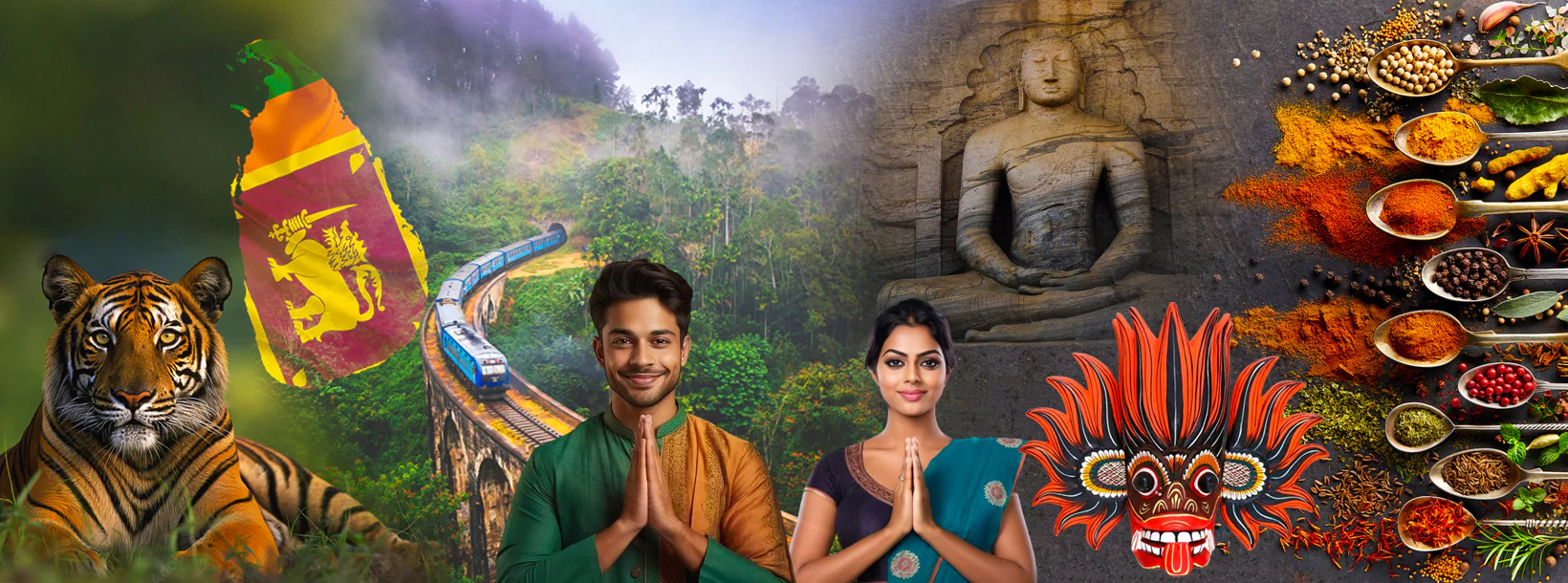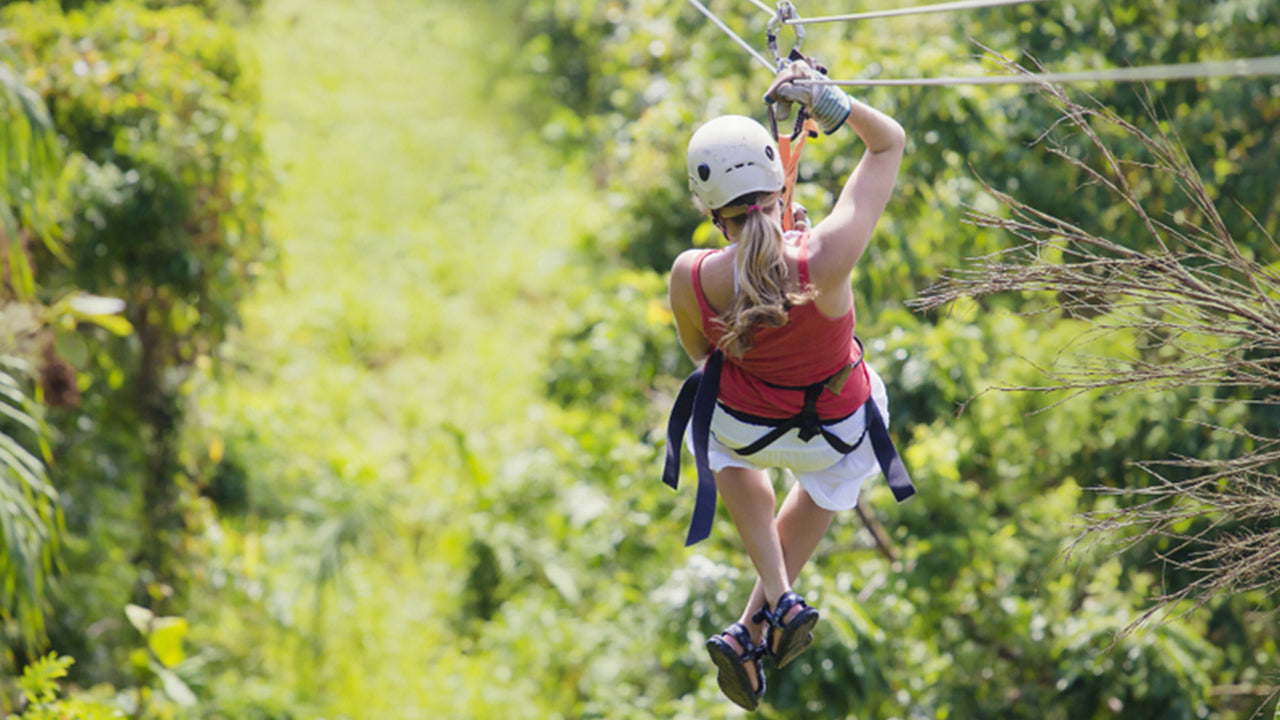
Sri Lanka
Sri Lanka, an island nation in South Asia, is renowned for its rich cultural heritage, diverse landscapes, and wildlife. Attractions include ancient temples, pristine beaches, lush tea plantations, and vibrant festivals. The country's unique blend of cultures, warm hospitality, and delicious cuisine make it a captivating destination for travelers.
Ancient Cities
Ancient Cities of Sri Lanka. Exquisitely carved stone structures, serene statues of Lord Buddha, dazzlingly decorated temples built in to rocky overhangs and feats of irrigation that amaze the world even today are just some of the treasures left by a proud civilization stretching back more than two thousand years.
Glorious Reminders of a resplendent past; the remains of Sri Lanka’s ancient palaces, monasteries, shrines, water gardens and temples bear witness to a thriving kingdoms and to the influence of Buddhism. These reminders of the past are so outstanding that five areas have the distinction of being designated World Heritage Sites by UNESCO. Fortunately for the visitor, four of these are conveniently located in the same region, dubbed the Cultural Triangle.
Anuradhapura City
The city of Anuradhapura is situated one hundred and twenty eight miles (205 km) north of Colombo in the North Central Province of Sri Lanka on the banks of the Malwatu Oya.
The Histroy
The largest and oldest of all Sri Lanka’s ancient cities, Anuradhapura is a fitting climax to any tour of the Cultural Triangle. Arguably, it takes a bit more effort to imagine it as it was more than 2000 years ago, with palaces and huge dagobas standing up to nine storeys high, a main processional avenue 24km (16 miles) long, and the richly decorated, ostentatious mansions of Sinhalese nobles and wealthy foreign merchants.
Founded by King Pandukhabaya in 437BC, by the mid-3rd century BC Anuradhapura’s fame had spread as far as the Roman-Hellenistic world of the Mediterranean and by the 1st century AD it had established trade and diplomatic links with China. The Jetavana treasures, unearthed over the past 20 years (some are now displayed in the partially completed Jetavanarama Museum, on site) show evidence of these links to east and west.
Anuradhapura was the royal seat of more than 250 Buddhist and Hindu kings recorded in the royal genealogies, and the preeminent city on the island for some 1400 years.
Anuradhapura
Anuradhapura’s proximity to southern India both enriched it and encouraged the kingdom’s conversion to Buddhism, but was also its eventual downfall, making it vulnerable to the invading Tamil forces of Rajaraja Chola, who sacked the city in the 11th century AD. The Sinhalese capital then moved to Polonnaruwa. Although attempts were made to preserve its monuments after the overthrow and expulsion of the Chola dynasty, it was never restored to its former glory.
The Mawathu Oya River forms the boundary between the sacred ancient city and the modern town of Anuradhapura, east of the river. To the west are several large tanks, some of them the work of King Mahasena (AD276-303), whose passion for large-scale construction also endowed the city with the enormous Jetavanarama Dagoba.
A World Heritage Site
Anuradhapura has been classed as a World Heritage Site by UNESCO. Anuradhapura or ‘the kingdom of Anura’, is the earliest capital of Sri Lanka and was home to the royal court from 437 BC to 1017 AD. However it is not only a city, but one of the great centres of Buddhism in South Asia visited by thousands of pilgrims and tourists each year. The site consists of a central ten metre high mound covered in jungle, marking the old urban core, surrounded by over thirty square kilometres of Buddhist monasteries and huge reservoirs. Amongst the most spectacular of the Buddhist monuments are four great stupas, solid domes of earth and brick, built over a Buddhist relic, which reach heights of over eighty metres and dominate the landscape of paddy fields and coconut trees.
Kings and History of Anuradhapura
Anuradhapura, according to legend, was first settled by Anuradha, a follower of Prince Vijaya the founder of the Sinhala race. Later, it was made the Capital by King Pandukabhaya about 380 BCE.
King Pandukabhaya, 380 BCEPolonnaruwa City
135 miles from Colombo and southeast of Anuradhapura is Polonnaruwa which was the media eval capital of Sri Lanka, and the ancient city is today one of the most beautiful centres of this island?s cultural heritage. When early in the 11th century AD Anuradhapura suffered one of the worst of its many Indian invasions, Polonnaruwa became the next of rule
Histroy
The second most ancient of Sri Lanka’s kingdoms, Polonnaruwa was first declared the capital city by King Vijayabahu I, who defeated the Chola invaders in 1070 CE to reunite the country once more under a local leader. While Vijayabahu’s victory and shifting of Kingdoms to the more strategic Polonnaruwa is considered significant, the real Polonnaruwa Hero of the history books is actually his grandson, Parakramabahu I.
It was his reign that is considered the Golden Age of Polonnaruwa, when trade and agriculture flourished under the patronage of the King, who was adamant that no drop of water falling from the heavens was to be wasted, and each be used toward the development of the land; hence, irrigation systems far superior to those of the Anuradhapura Age were constructed during Parakramabahu’s reign, systems which to this day supply the water necessary for paddy cultivation during the scorching dry season in the east of the country.
Polonnaruwa
The greatest of these systems, of course is the Parakrama Samudraya or the Sea of Parakrama, a tank so vast that that it is often mistaken for the ocean. It is of such a width that it is impossible to stand upon one shore and view the other side, and it encircles the main city like a ribbon, being both a defensive border against intruders and the lifeline of the people in times of peace. The Kingdom of Polonnaruwa was completely self-sufficient during King Parakramabahu’s reign.
However, with the exception of his immediate successor, Nissankamalla I, all other monarchs of Polonnaruwa, were slightly weak-willed and rather prone to picking fights within their own court. They also went on to form more intimiate matrimonial alliances with stronger South Indian Kingdoms, until these matrimonial links superseded the local royal lineage and gave rise to the Kalinga invasion by King Magha in 1214 and the eventual passing of power into the hands of a Pandyan King following the Arya Chakrawarthi invasion of Sri Lanka in 1284. The capital was then shifted to Dambadeniya.
Today the ancient city of Polonnaruwa remains one of the best planned Archeological relic sites in the country, standing testimony to the discipline and greatness of the Kingdom’s first rulers
World Heritage Site
In 1982 Ancient city of Polonnaruwa be inscribed on the World Heritage list under cultural criteria of C (i) (iii) (vi). UNESCO is an organization of the United Nations which nominates cultural or natural sites as World Heritage.
Kings and History of Polonnaruwa
King Aggabodhi IVSigiriya City
Sri Lankan architectural tradition is well displayed at Sigiriya, the best preserved city centre in Asia from the first millennium, with its combination of buildings and gardens with their trees, pathways, water gardens, the fusion of symmetrical and asymmetrical elements, use of varying levels and of axial and radial planning.
The Complex consists of the central rock, rising 200 meters above the surrounding plain, and the two rectangular precincts on the east (90 hectares) and the west (40 hectares), surrounded by two moats and three ramparts.
The plan of the city is based on a precise square module. The layout extends outwards from co-ordinates at the centre of the palace complex at the summit, with the eastern and western axis directly aligned to it. The water garden, moats and ramparts are based on an ?echo plan’ duplicating the layout and design on either side. This city still displays its skeletal layout and its significant features. 3 km from east to west and 1 km from north to south it displays the grandeur and complexity of urban-planning in 5 th century Sri Lanka.
For an in depth view, read our article on the Sigiriya Rock Fortress in Sri Lanka
Dambulla City
Dambulla is sited on a gigantic rock which towers more than 160m above the surrounding land. The Rock is more the 1.5km around its base and summit is at 550km. The caves were the refuge of King Walagamba (Vattagamini Abhaya) When he was exile for 14 years. When he return to the throne at Anuradapura in the 1st century BC, he had magnificent rock temple built at Dabulla. The site has being repaired and repainted several times in the 11th, 12th and 18th centuries.
For an in depth view, visit our article on the Dambulla Cave Temple in Sri Lanka
Dambulla was designated a World Heritage site in 1991. The caves have a mixture of religious and secular painting and sculpture. There are several reclining Buddha’s, including the 15m long sculpture of the dying Buddha in Cave 1. the frescoes on the walls and ceiling from the 15th-18th centuries; the ceiling frescoes show scenes from the Buddha’s life and Sinhalese history. Cave 2 is the largest and most impressive, containing over 150 statues, illustrating the Mahayana influences on Buddhism at the time through introducing Hindu deities such a s Vishnu and Ganesh.
Dambulla
A new large white Buddha (similar to the ones in Kandy and Mihintale) is planned for Dambulla. There is little evidence of monks who are housed in monasteries in the valley below where there is a monks’ school.
Kandy City
Situated in 116 km from Colombo, Located in the foothills of the central highlands around the banks of a picturesque lake, steeped in history, and possessing a salubrious Climate, Kandy is Sri Lanka’s renowned second city. In many ways, however, Kandy is more important than the true capital, for although Colombo may be the hub of commerce and communication, it is Kandy that has always been the centre of Sri Lanka’s rich culture and the symbol of the nation’s complex identity.
History and Heritage
The city of Kandy lies at an altitude of 488.6 meters (1629 feet) above sea level in the center of the island and surrounded by the ranges of mountains. It is still very much a focal point of Sri Lankan culture. It was the capitol of last generation of Sri Lanka`s kings until it fell in to the hands of British in 1815.
Kandy was originally known as Senkadagalapura after a hermit named Senkada who lived there. Many of Sinhalese people call it ?Mahanuwara? meaning the “Great City?. But the name Kandy was derived from the Word “Kanda”, which means mountain. Due to it’s geographical location Kandy was not an easy target for the foreign invaders who could gain the control of coastal area of the island.
Thus Kandyan culture was abler to foster and maintain its own social structure, mode of living, Art & Architecture. The kings of Kandy ensured the safety and sovereignty of the hill capital until the British finally captured the city in 1815.
Kandy
The royal palace in Senkadagala was built by King Vikramabahu the 3rd of Gampola on the advice of a Brahmin who selected the site as a lucky ground for a Capital city. The first king to ascended the throne of Senkadagala was Sena Sammata Wickramabahu.




